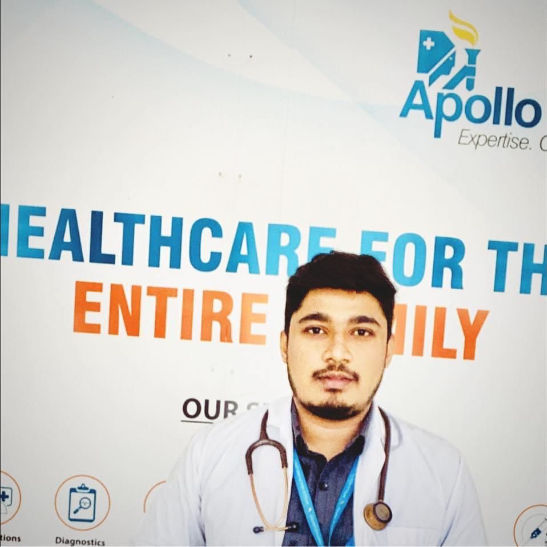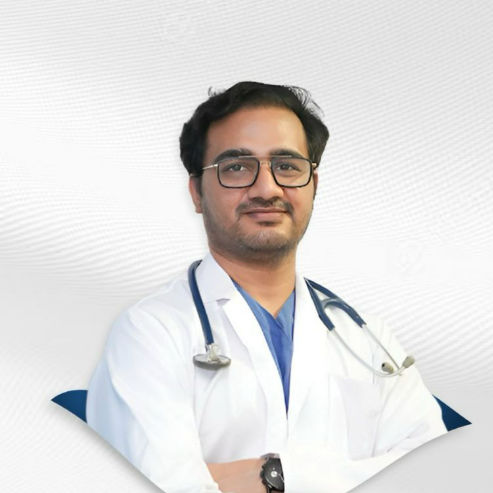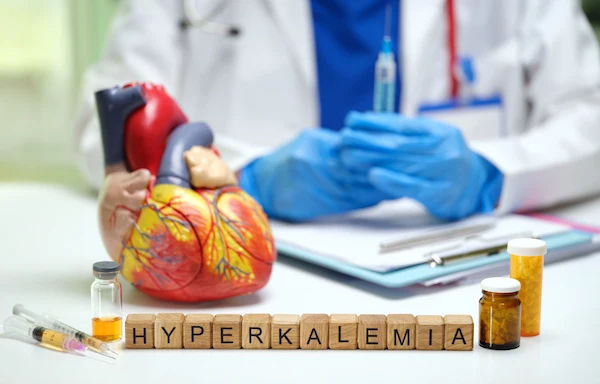Heart Surgery: Conditions Requiring Intervention
Learn about the heart conditions that may require surgical intervention, the types of heart surgery available, and what patients can expect before and after treatment.

Written by Dr. Rohinipriyanka Pondugula
Reviewed by Dr. Siri Nallapu MBBS
Last updated on 6th Oct, 2025

Introduction
The words "heart surgery" can understandably cause anxiety. However, understanding the specific conditions that lead to this intervention can demystify the process and empower you to have informed discussions with your doctor. Heart surgery isn't a single solution; it's a broad term for procedures designed to treat a range of serious cardiovascular diseases when other treatments are no longer effective. This guide will walk you through the primary diseases that necessitate heart surgery, explaining the "why" behind the procedure in clear, straightforward terms. Whether you're concerned about coronary artery disease, a faulty heart valve, or a congenital issue, knowing when surgery becomes the recommended path is a critical step in taking control of your heart health.
Understanding the Goal: Why Heart Surgery is Necessary
Before diving into specific diseases, it's helpful to understand the fundamental goals of cardiac surgery. Surgeons don't operate on a healthy heart; they intervene to solve a critical problem that medication or less invasive procedures cannot fix.
Restoring Blood Flow
The heart muscle itself needs a constant supply of oxygen-rich blood to function. When the coronary arteries that supply this blood become blocked, it can lead to chest pain (angina) or a heart attack. Surgery aims to create new pathways for blood to flow, bypassing the clogged arteries.
Repairing or Replacing Structures
The heart has valves that act as one-way doors, ensuring blood flows in the correct direction. If these valves become narrowed (stenosis) or leaky (regurgitation), the heart must work much harder. Surgery can repair or replace these valves to restore efficient function. This also applies to repairing weaknesses in the heart's walls or the major blood vessels like the aorta.
Correcting Electrical Problems
An irregular heartbeat, or arrhythmia, can be dangerous. Certain surgical procedures can create scar tissue in precise patterns on the heart to block abnormal electrical signals and restore a normal rhythm, reducing the risk of stroke.
Coronary Artery Disease (CAD): The Most Common Reason for Heart Surgery
Coronary Artery Disease is the leading cause of heart surgery worldwide. It occurs when fatty deposits (plaque) build up inside the coronary arteries, narrowing them and reducing blood flow to the heart muscle.
What is CAD and How Does it Lead to Surgery?
Initially, CAD is managed with lifestyle changes and medications. However, if multiple arteries are severely blocked, or if the blockages are in critical locations, the risk of a major heart attack becomes too high. This is when surgery for coronary artery disease becomes the best option to prevent permanent damage and save lives.
Coronary Artery Bypass Grafting (CABG): The Bypass Surgery
The primary surgical treatment for advanced CAD is Coronary Artery Bypass Grafting, commonly known as bypass surgery. A surgeon takes a healthy blood vessel from another part of your body (like the chest, leg, or arm) and creates a new route for blood to flow around the blocked artery. A single CABG procedure can bypass multiple blocked arteries during one operation.
When is CABG Recommended Over Stents?
While stents (tiny mesh tubes inserted via a catheter) are a less invasive option for some, bypass surgery is often recommended for patients with:
- Blockage of the left main coronary artery.
- Severe blockages in three or more arteries.
- Diabetes, as studies show better long-term outcomes with surgery.
- Weakened heart muscle.
Consult Top Specialists for Personalised Tips
Heart Valve Diseases: When the Doors Malfunction
Your heart has four valves that keep blood moving forward. Disease can damage these valves, leading to two main problems: stenosis (narrowing) or regurgitation (leaking).
Aortic Stenosis and the TAVR Procedure
Aortic stenosis is a narrowing of the aortic valve, forcing the heart to work extremely hard to pump blood to the body. Symptoms include chest pain, shortness of breath, and fainting. If left untreated, it has a very poor prognosis. Traditional open-heart surgery to replace the valve has been the standard. Now, for many patients, a minimally invasive option called TAVR (Transcatheter Aortic Valve Replacement) is available. In TAVR, a new valve is delivered via a catheter through an artery in the leg, avoiding open-heart surgery.
Mitral Valve Regurgitation and Repair Techniques
Mitral regurgitation occurs when the mitral valve doesn't close tightly, allowing blood to leak backward into the left atrium. This can cause fatigue and shortness of breath. Whenever possible, surgeons prefer to repair the mitral valve rather than replace it, as repair preserves better long-term heart function. Techniques can include inserting a clip to help the valve close or reshaping parts of the valve.
Diseases of the Aorta: The Body's Main Pipeline
The aorta is the large artery that carries blood away from your heart. Serious conditions affecting it are life-threatening and almost always require surgical intervention.
Aortic Aneurysm: A Dangerous Bulge
An aortic aneurysm is a weak spot that causes the aorta to balloon outward. If an aneurysm in the ascending aorta grows too large (typically over 5.0-5.5 cm), the risk of a rupture, which is often fatal, becomes high. Surgery to replace the weakened section of the aorta with a synthetic graft is performed to prevent this catastrophe.
Aortic Dissection: A Surgical Emergency
An aortic dissection is a tear in the inner layer of the aorta. Blood forces its way between the layers, causing them to separate. This is a medical emergency causing severe, tearing chest pain. Type A dissections, which involve the part of the aorta closest to the heart, require immediate emergency heart surgery to replace the damaged segment and save the patient's life.
Heart Failure: Surgical Options for a Weakened Heart
When the heart is too weak to pump enough blood to meet the body's needs, it's called heart failure. Surgery plays a role in advanced stages.
Left Ventricular Assist Devices (LVADs) as a Bridge to Transplant
An LVAD is a mechanical pump that helps the main pumping chamber (left ventricle) do its job. It can be used as a "bridge to transplant" for patients waiting for a donor heart, or as "destination therapy" for those who are not transplant candidates but need long-term support.
Heart Transplant: The Last Resort
For end-stage heart failure when all other treatments have failed, a heart transplant may be the only option. This involves replacing the patient's diseased heart with a healthy donor heart. It's a major procedure with significant risks and a lifelong regimen of medications to prevent rejection, but it can offer a new lease on life.
The Surgical Decision: How Doctors Determine if You Need an Operation
The decision to proceed with heart surgery is never taken lightly. It's made by a multidisciplinary team of cardiologists and cardiac surgeons based on a comprehensive assessment. This includes your symptoms, the severity of your disease (as seen on tests like echocardiograms, angiograms, and CT scans), your overall health, and how your condition is impacting your quality of life. If your symptoms persist despite maximal medical therapy, or if your diagnostic tests indicate a high risk of a future cardiac event, your doctor may recommend consulting a cardiac surgeon to discuss the benefits and risks of surgical intervention. For a personalised evaluation, you can consult a cardiologist online with Apollo24|7 to discuss your symptoms and test results.
Conclusion
Understanding which diseases require heart surgery can transform fear into knowledge. From bypassing blocked arteries in Coronary Artery Disease to replacing a narrowed aortic valve or repairing a life-threatening aortic aneurysm, these procedures are modern medicine's powerful answer to serious cardiac conditions. The field is continually advancing, with minimally invasive techniques reducing recovery times and improving outcomes for many patients. The key takeaway is that heart surgery is a well-established, life-saving treatment for clearly defined problems. If you or a loved one are facing a potential cardiac procedure, the most important step is to have open, detailed conversations with your healthcare team. They can provide the specific information you need about your condition, the recommended surgical options, and the expected path to recovery. Taking a proactive role in your heart health, whether through lifestyle choices or informed medical decisions, is the best way to ensure a stronger, healthier
Consult Top Cardiologists
Consult Top Specialists for Personalised Tips

Dr. Anand Ravi
General Physician
2 Years • MBBS
Bengaluru
PRESTIGE SHANTHINIKETAN - SOCIETY CLINIC, Bengaluru

Dr. Tripti Deb
Cardiologist
40 Years • MBBS, MD, DM, FACC, FESC
Hyderabad
Apollo Hospitals Jubilee Hills, Hyderabad
Dr Moytree Baruah
Cardiologist
10 Years • MBBS, PGDCC
Guwahati
Apollo Clinic Guwahati, Assam, Guwahati

Dr. Zulkarnain
General Physician
2 Years • MBBS, PGDM, FFM
Bengaluru
PRESTIGE SHANTHINIKETAN - SOCIETY CLINIC, Bengaluru

Dr. Janjirala Seshivardhan
Cardiologist
7 Years • MBBS,DNB(GM),DM(Cardiology)
Manikonda Jagir
Apollo Clinic, Manikonda, Manikonda Jagir
Consult Top Cardiologists

Dr. Anand Ravi
General Physician
2 Years • MBBS
Bengaluru
PRESTIGE SHANTHINIKETAN - SOCIETY CLINIC, Bengaluru

Dr. Tripti Deb
Cardiologist
40 Years • MBBS, MD, DM, FACC, FESC
Hyderabad
Apollo Hospitals Jubilee Hills, Hyderabad
Dr Moytree Baruah
Cardiologist
10 Years • MBBS, PGDCC
Guwahati
Apollo Clinic Guwahati, Assam, Guwahati

Dr. Zulkarnain
General Physician
2 Years • MBBS, PGDM, FFM
Bengaluru
PRESTIGE SHANTHINIKETAN - SOCIETY CLINIC, Bengaluru

Dr. Janjirala Seshivardhan
Cardiologist
7 Years • MBBS,DNB(GM),DM(Cardiology)
Manikonda Jagir
Apollo Clinic, Manikonda, Manikonda Jagir
More articles from General Medical Consultation
Frequently Asked Questions
What are the warning signs that I might need heart surgery?
Severe symptoms that persist despite medication are a key indicator. These include worsening chest pain (angina), extreme shortness of breath during minimal activity, fainting spells due to valve disease, or a diagnosis of a large aortic aneurysm. Your cardiologist will determine if surgery is necessary based on these symptoms and diagnostic test results.
What is the difference between open-heart surgery and minimally invasive surgery?
Open-heart surgery typically involves a large incision through the breastbone (sternotomy) to access the heart. Minimally invasive surgery uses several small incisions between the ribs, often with the aid of a camera. Minimally invasive techniques, like TAVR or mitral clip procedures, generally mean less pain, shorter hospital stays, and faster recovery, but are not suitable for all conditions or patients.
Is heart surgery safe? What are the major risks?
While all surgery carries risk, cardiac surgery has become very safe with modern technology and techniques. Major risks include bleeding, infection, stroke, irregular heart rhythms, and reactions to anaesthesia. However, for the conditions it treats, the risk of not having surgery often far outweighs the risks of the procedure itself.
How long does recovery from major heart surgery take?
Recovery is a process. Hospital stays are typically 5-10 days. Full recovery from a procedure like CABG can take 6-12 weeks. Cardiac rehabilitation, a supervised program of exercise and education, is crucial for a safe and effective recovery, helping you regain strength and reduce future heart risks.
Can heart problems come back after surgery?
It depends on the procedure. Bypass grafts can develop blockages over time, and prosthetic valves can wear out or develop clots. However, surgery is intended to provide a long-term solution. Adhering to a heart-healthy lifestyle, taking prescribed medications (like blood thinners if you have a mechanical valve), and attending regular follow-up appointments are essential to maintaining the benefits of surgery. For convenient monitoring, Apollo24|7 offers home collection for crucial follow-up tests like INR to monitor blood thinning levels.




